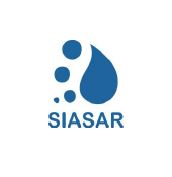Conceptual Model SIASAR 2.0
SIASAR is an information platform for managing, planning and monitoring the rural water and sanitation sector. In essence, SIASAR is presented as a tool to support decision-making, and is defined by a set of indicators that are aggregated in a reduced number of indices or dimensions. During 2015 and first half of 2016, the SIASAR team has defined a new conceptual model, with a focus on indicators and indices. This new model has been developed through a participatory process, partially tested in the field, and formally approved by the SIASAR community. During this process, remarkable milestones included i) the organisation of four regional meetings, ii) the elaboration of seven follow-up reports, and iii) the participation in twenty two regional videoconferences. The new SIASAR 2.0 includes a more comprehensive description of the rural water and sanitation service level, based on more reliable and accurate indicators and indices. Taking SIASAR 1.0 as starting point, the process of re-defining the conceptual framework has focused on i) the identification and definition of indicators, and ii) the conceptualization of the classification rules through the multi attribute utility theory and aggregate indices. SIASAR 2.0 is based on a set of aggregated indices, as shown in Table 1. The conceptual model is first made up of a battery of indicators (60), classified into 24 components, which in turn are grouped into a reduced number of dimensions (6): i) Water Service Level (WSL), ii) Sanitation and Hygiene Service Level (SHL), iii) Schools and Health Centres - WaSH (SHC), iv) Water System Infrastructure (WSI), v) Service Provision (SEP), and vi) Technical Assistance Provision (TAP). At a higher level, these dimensions are aggregated in two sub-indices: i) Water, Sanitation and Hygiene Service Level Index (WSHL), and ii) Water Services Sustainability Index (WSSI). These two partial indices generate a final aggregated index: the Water and Sanitation Performance Index (WSP). Furthermore, the conceptual model incorporates two complementary indices, providing additional and useful information: i) Lack of Components Index (LOC), and ii) Low Performance Components Index (LPC).
